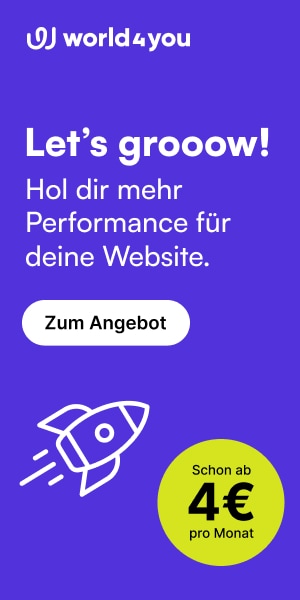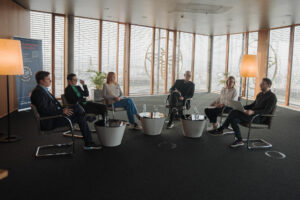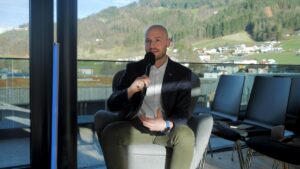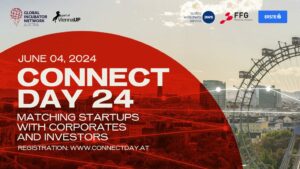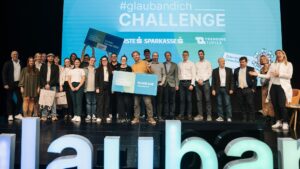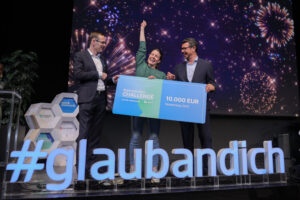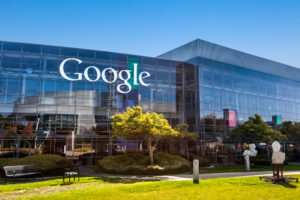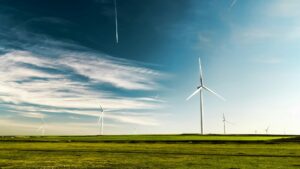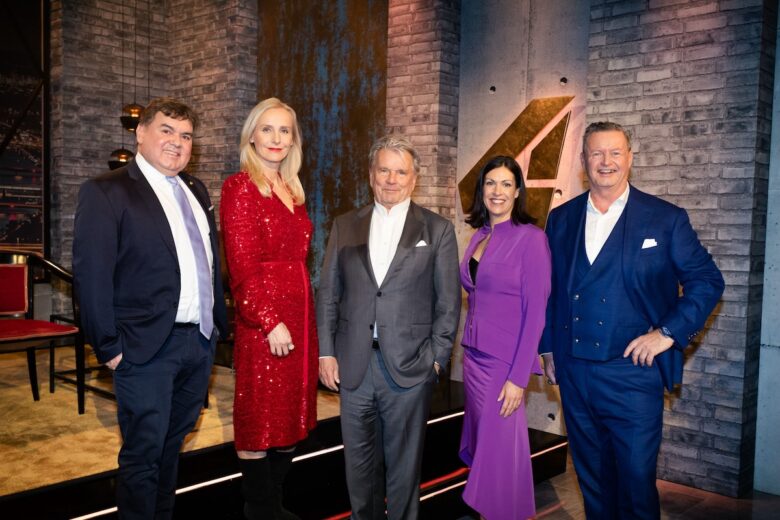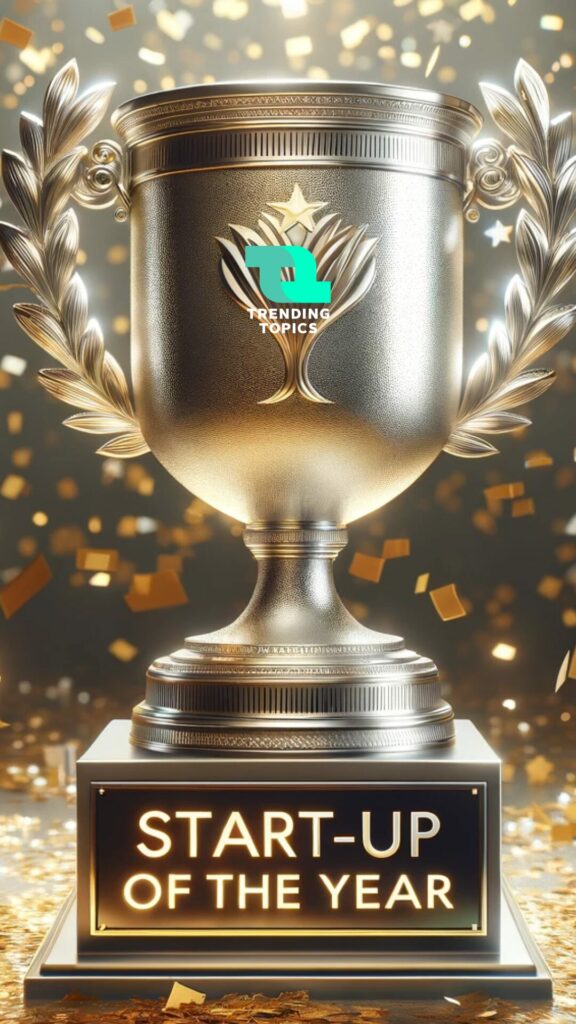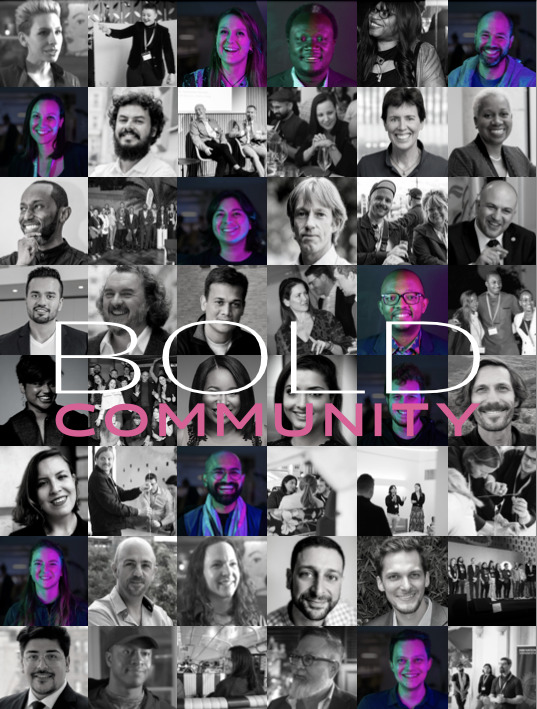Elaphe Propulsion Technologies: A Slovenian Startup Pioneers The In-Wheel Drive
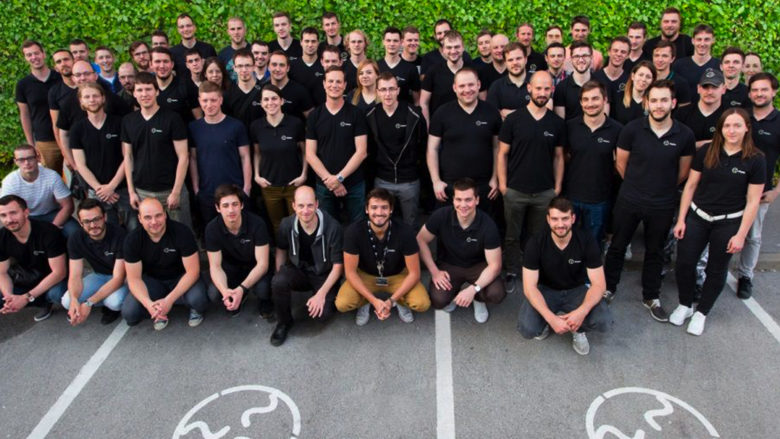
„CEE Star of the Week“ is our weekly series of short stories where we present a company from Central and Eastern Europe that has recently achieved something significant – closed an investment round, won a prize, successfully launched on a new market, made a prominent hire, etc. The stories can be found both on trendingtopics.at and trendingtopics.eu.
Founded in 2006 with a goal to bring in-wheel powertrain solutions to the automotive mass market, Elaphe Propulsion Technologies has recently attracted a €4.2M Euro A+ investment from EIT InnoEnergy, the innovation engine for sustainable energy across Europe. Elaphe is a developer and producer of high-tech propulsion technology based on the premise of multiple-motor propulsion. The company has so far created a range of direct drive-in motors suitable for electric vehicle powertrain designs. Elaphe’s achievements include the world’s highest-performance in-wheel-powered applications to date, including pioneering an in-wheel driven SUVs and supercars. We reached out to Luka Ambrozic, the CSO of Elaphe, to ask how they managed to build such a company, what are their future plans, and more.
Trending Topics: Tell us more about the electric vehicle market – what is it like? What is your place in it?
Luka Ambrozic: The electric vehicle market is very vibrant, as you might imagine. It used to be a very niched thing that only a few people were doing but now it is becoming mainstream. Everyone is doing it and they are investing the majority of their research and development (R&D) into this type of technology. We should say that electric vehicles are only a part of the equation. They are a part of the future of developed markets – Europe, China, America, etc. In places like Indonesia, Africa, South America – there, internal combustion engines (ICE) will remain as they do not have the infrastructure to support the electric mobility market. The absence of infrastructure practically means that they will progress at a slower rate.
Everyone in this industry is looking for two things: Firstly, how do we develop an appealing electric vehicle with respect to price range, design, features, so that brands can sell large quantities; the second important thing is how are companies going to compete at a market that is full of very similar vehicles: in other words, what is going to be unique about the vehicle. The same thing is today with diesel cars: manufacturers usually compete in which car has a better design and features, for instance. That is why producers should aim to maximize customer experience. This is our view and we strive to achieve this maximization on many levels.
We maximize the customer experience for the vehicle design. For example, if you put the powertrain only on the wheels, you have a lot more space in the car. You can play around and make the design of the vehicle different because you are not constrained by the components. You can, of course, then, provide a benefit for the people that will be producing the vehicle because you can make the vehicle cheaper. By playing with the design, you can make the vehicle easier to produce. Then, if you go on the user level, this kind of platform is probably the closest to what you call a software-defined car. So, imagine how the human body is structured: muscles are usually very close to where you need them to be. You do not have one big, central muscle that pulls all the strings. It is the same with the car.
By putting the motors directly to where the force is generated, you can influence how a vehicle acts, impact safety and the reactions of the car. Such a system can easily become autonomous. You can also use sensors. What it all comes down to is that you have the biggest freedom when it comes to design and you have the biggest control over what the vehicle does. Both these things then affect the features and user experience that you offer to the market and these are the things that vehicle-makers will compete with each other for.
A solution to what problem are you offering to your clients?
The biggest problem that we are trying to solve is not so much connected with cars but more with the planet. We can make people have smaller and lighter cars with the same amount of comfort and interior space. That is what it comes down to – you use less material, which is better for the planet. It also means that the vehicle is much more efficient. It also means that you’ll have more space in the cities and that the vehicle will ultimately cost less. All of these things come from the freedom of design and the absence of constraints. In the end, we would prefer that there are more bicycles than cars, but if we at least can contribute to our know-how to make the vehicles more rational, then that is our approach.

What is special about your company?
Everyone is trying to leave an impact and is doing crazy things sometimes. We, as a company, just started off with these vehicles, so that’s one of the Lego blocks from our plan. There is a lot more to do in the future, but, in order to start these future projects, we need to first push our vehicles into the mass market because this is when it will become sensible and cheap enough for people to actually benefit from them. Then, of course, in 20 years there will be new technologies that will build on a similar principle but will be very different on a basic, physical level, from what we have now. If our projects work now, then, in the future, we’ll be having a lot more technologies of this kind.
What is your business model?
Generally, we have two modes of operation and it depends on the situation. Firstly, we work with specific brands and non-core markets; if they are early adopters, we also enable licensing. This means that we provide support in design and development for their products but then they can be manufactured by the vehicle-makers. The other model: we are acting as a tier-one supplier or even a system supplier which is similar to, for example, what Porsche is doing today. For now, we are more an R&D company than a production company but we are growing our capacities. We are already setting up one manufacturing line for a client in the USA. There also is a company in China that we are in a joint venture for the China market where we are also setting up a production line.
What differentiates your product from the other competitors in the market?
Everyone is trying to leave an impact and is sometimes doing crazy things. We, as a company, just started off with these vehicles, so that’s one of the Lego blocks from our plan. There is a lot more to do in the future, but, in order to start these future projects, we need to first push our vehicles into the mass market because this is when it will become sensible and cheap enough for people to actually benefit from them. Then, of course, in 20 years there will be new technologies that will build on a similar principle but will be very different on a basic, physical level, from what we have now. If our projects work now, then, in the future, we’ll be having a lot more technologies of this kind.
There are two levels of competition in the market. The first level consists of the technology that is currently on the market. When it comes to these competitors, where we benefit the most is our packaging. We can squeeze the powertrain in spaces where it is space available and this means that we create much more playroom. When we talk about other technology developers (there are not too many, actually), our advantage is in the torque electric power as it enables our motors to be the strongest and the lightest at the same time. Also, our design philosophy is different – we do not create a product but a scalable technology that can be easily customized for different vehicles and customized for the needs of a customer.
What we have is a standard product, a big sample, if you prefer, that we sell to people as a prototype – they can further develop it. In the end, there is always some kind of customization that goes into the production, this is our core know-how. As a company, our key differentiation is that we work holistically- we do not just make motors but we are trying to solve the propulsion equation for a car and for any kind of vehicle. We try to take into account broader systems and design everything to fit that. We do not just build a motor according to the specifications and raise our hands and say “That’s it”, we try to keep our startup mentality, although that we are growing in a mature company.
What are amongst your biggest challenges so far?
Our company has been developing this technology for more than 15 years. This is a lot of time during which it had to stay true to its beliefs and this has not always been easy. For example, we were ahead of our time. Imagine how markets evolve – we first started with a general notion that it has to be an electric vehicle market (which it wasn’t back then). What is more, the market had to mature and it needed a second and third generation of the powertrain.
The biggest challenge was to stay relevant after all this time waiting and surviving until there was a match between the opportunities and our ideas. Now is the right time in the market. With this technology, it is a little bit controversial – it has the same architecture of the technology that even Porsche developed in the 1900s, so more than a hundred and twenty years ago, this technology existed. Of course, in the first 20 years of the 20th century, electric cars were everywhere but the battery technology was so bad that they were slow. The cars didn’t go fast and they had a very small range, so they did not really take off.
Now is a different time – all the technologies have evolved, we now have the computing power. While the idea is still the same, everything that is connected to technological implementation is a lot different. We are now able to do things that were impossible even 10 years ago because things have evolved so much. One of the biggest challenges for us is that the majority still believes that the limitations of this technology are what they were 10 years ago. Our mission is to convince them that they are not right, but that can be a difficult thing to do. It is important that we work to spread awareness. This leads me to another thing that is special about us: we see our competitors also as our friends who, just like us, are trying to educate the market. Once that we all manage to convince people, there will be a piece of cake for everyone. The important thing is that we are trying to improve the way things are done.
What is the next step for Elaphe?
We will be investing in a lot more technologies. We will not stop with the motor, because, in the end, it is a commodity, a piece of metal that you buy when starting mass production. It is very standard. We are focused on developing a system – this means that we’re focusing on software development to support applications that use such kind of architecture. We are working on some new technologies and concepts. As a company, we are going to expand in terms of infrastructure and grow our production capacity because that is going to help us grow in other areas.
Will you be having another investment round?
Yes, we plan on starting another investment round soon. What I must say is that we are a financially sustainable company. For a startup, this is very unusual. Of course, we are not making a very big profit because we reinvest most of our profit in research and development. Yet, we manage to generate revenue to support ourselves. Investments are simply allowing us to grow and expand faster and do things that we might have not had the resources to do. We are looking for more strategic investors, not just for money. When it comes down to our past investment rounds, we have closed them in order to upgrade and develop our technology. Our latest investment is something that we worked on for a long time. We mostly used the resources provided to commercialize our technology. It is more of a business accelerator that is going to help us make more customers see the potential.


